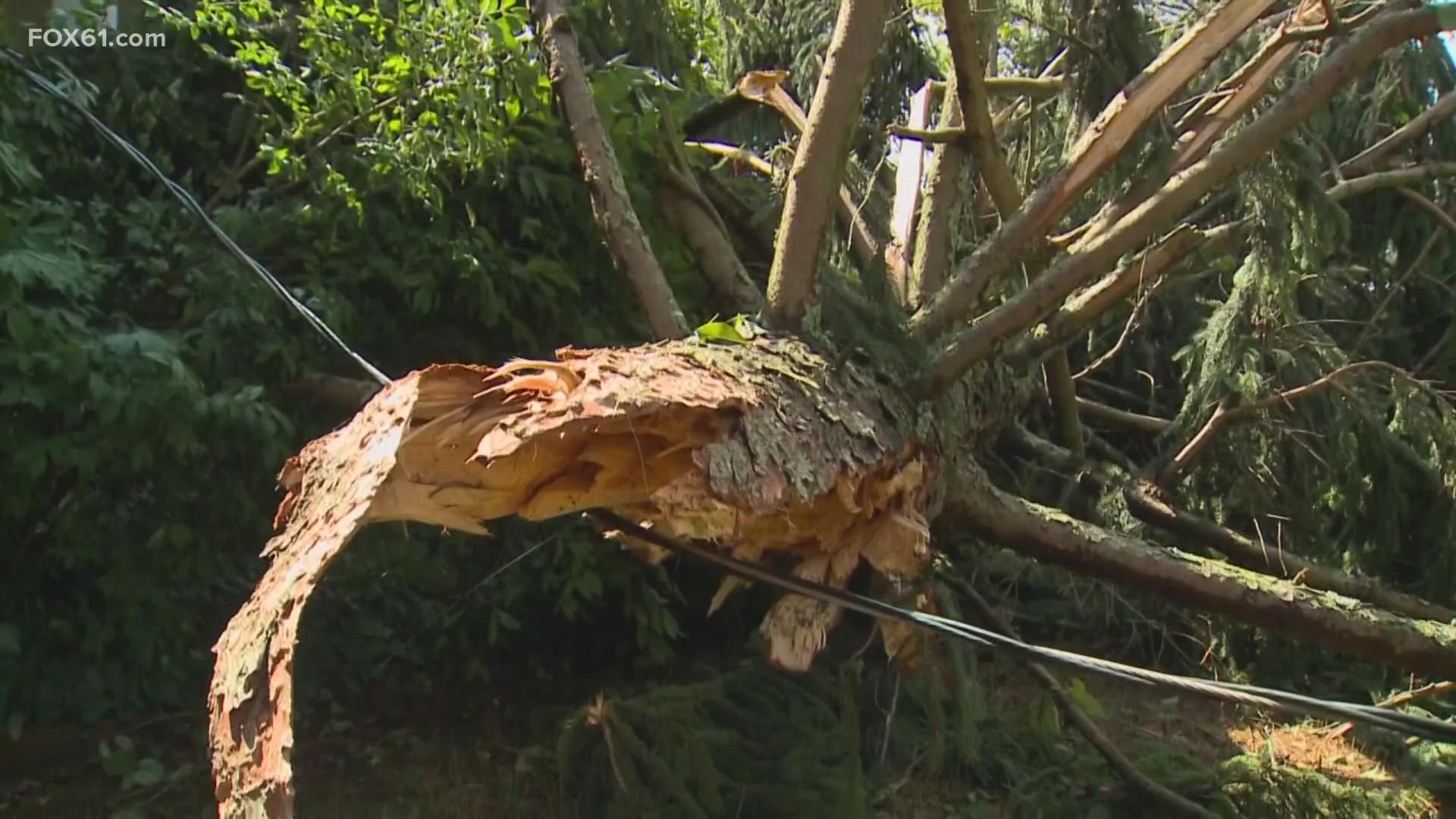HARTFORD, Conn. — We all depend on electricity and the systems that deliver it to be constant and dependable.
But what happens when supply systems and lines fail?
“Oftentimes that comes in the form of a fierce storm,” President of Eversource Connecticut Electric Steve Sullivan said. "Over 50% of customer outages are caused by trees. Then when you turn to a large storm, over 90% of our outages are caused by trees."
Eversource is sweeping more than 4,000 of its 17,000 miles of power lines this year, trimming trees, and reminding customers along the way that the one line in their yard could create a ripple effect if a tree falls on it.
“It’s probably not just going to affect your service; it’s highly likely to impact 500 or 600 of your neighbors as well,” Sullivan explained.
Eversource is also fortifying the infrastructure, replacing poles with taller, stronger ones, along with new technology.
Keeping the power lines intact isn’t the only issue.
ISO New England oversees the whole grid in the six-state region and the mix of energy sources that flow into it.
“In New England, right now, we use the most energy in the summer,” according to Matt Kakley from ISO New England, adding weather is the major driver of demand.
Relying on electricity to run our fans and air conditioners, the demand is highest during the hot summer months.
In the future, electricity demand is expected to grow in the winter. As fossil fuels are phased out, more electric vehicles are purchased, and heat pumps are installed, the demand will increase in the wintertime.
The wintertime peak is expected to eventually surpass the summertime peak, perhaps in the next decade.
Right now, New England generates a lot of its electricity from natural gas. Natural gas is also used to heat homes and businesses.
“Natural gas pipelines are not sufficient to both serve heating demand and electricity power plant use,” Kakley said.
“That gas pipeline system was really built to deliver all the residential homes and business that need that gas for heat in the winter, and that’s who gets it first,” Sullivan said.
ISO New England monitors weather forecasts and outlooks to determine the mix of energy resources. When cold snaps are predicted, other sources are tapped into.
“We turn to store fuels, which is oil or liquefied natural gas. And the concern is in a long duration cold snap, that you would be burning through those fuels quicker than you can replenish them,” Kakley added.
If the intensity or duration of the cold snap is underpredicted, the expected energy demand will be higher, putting more strain on the system.
That leads to the problem people in Texas and the Carolinas faced recently, rolling blackouts in the middle of frigid cold to keep the grid from failing offline completely.
“What we've seen in other parts of the country is that a controlled power outage for short duration is obviously very impactful. But, when we saw what happened in Texas in 2021, where people's power's out for several days, that is a true crisis,” Kakley added.
Until more renewable energy sources come online, as state environmental goals drive what forms of energy are available, having enough electricity to go around on the most extreme weather days will be a concern.
“Until then we have this issue: Heavily dependent on natural gas energy supply, and it’s a pinch point in the winter,” Sullivan said.
Offshore wind is one source that could make a difference, but it will take several more years to be a big enough contributor to the grid.
Ryan Breton is a meteorologist at FOX61 News. He can be reached at rbreton@fox61.com. Follow him on Facebook, Twitter and Instagram.
Have a story idea or something on your mind you want to share? We want to hear from you! Email us at newstips@fox61.com

